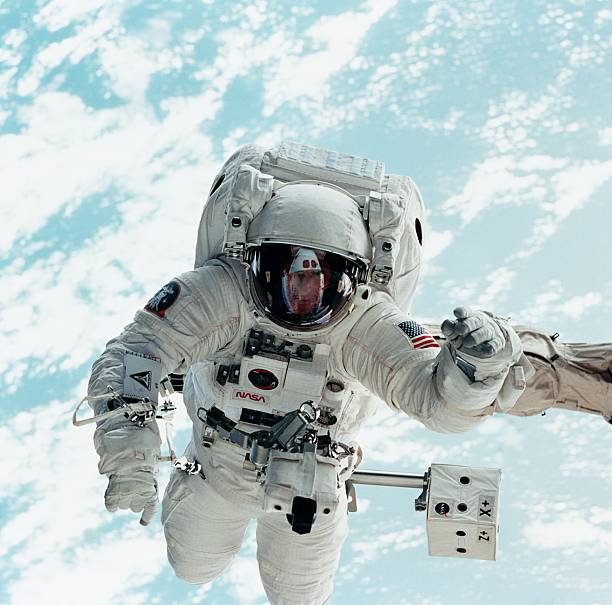Space exploration has always captivated the human imagination, and one recent mission has pushed the boundaries of what we thought was possible. In this article, we delve into the extraordinary journey of a NASA astronaut and two Russian cosmonauts who spent over a year in space. Their story is not only about scientific achievements but also the human spirit’s resilience in the face of adversity.

A Mission Extended
From 180 Days to 371 Days
What was initially planned as a 180-day mission turned into a remarkable 371-day voyage. This extended stay in space was triggered by a series of unexpected events, challenging the astronauts both mentally and physically.
The Soyuz Capsule Saga
A Crucial Lifeline
The astronauts‘ safe return to Earth hinged on the reliability of a Soyuz capsule. This Soyuz played a pivotal role in their journey and brought them back home.
An Unplanned Replacement
Their original Soyuz capsule faced a daunting predicament when it was struck by space debris. This collision damaged the radiator, resulting in the loss of all coolant. The situation was dire, and returning in the damaged capsule was not an option.
Overcoming Adversity
Waiting for Rescue
With their original Soyuz out of commission, the astronauts had to patiently wait for a replacement. This unexpected delay extended their mission beyond anyone’s expectations.
The Heroic Return
Upon their eventual return to Earth, the astronauts faced the intense forces of re-entry, experiencing over four times the force of gravity. Helicopters swiftly moved in with recovery crews to ensure their safe retrieval.
Reflections on a Year in Space
Missing Milestones
Frank Rubio, the American astronaut, shared the personal sacrifices he made during this mission. He missed significant family milestones, including his children’s educational achievements.
The Psychological Toll
Rubio candidly expressed that the psychological aspect of spending over a year in space was more challenging than expected. This experience raises important questions about the mental well-being of astronauts during long missions.
A Record to Remember
Frank Rubio’s Achievement
Frank Rubio’s mission set a new record for the longest U.S. spaceflight, surpassing NASA’s previous endurance record. However, it falls short of the world record held by Russian cosmonauts in the mid-1990s.
Future of Long-Duration Spaceflight
While Rubio’s accomplishment is commendable, NASA currently has no plans for more yearlong missions. This underscores the need for further research and preparation for extended missions in the future.
Conclusion
The triumphant return of Frank Rubio and his Russian colleagues is a testament to the indomitable human spirit. Their journey not only expanded our understanding of space but also highlighted the challenges and sacrifices astronauts endure for the sake of scientific exploration. As we celebrate their safe return, we also look toward the future of space exploration and the lessons learned from this extraordinary mission.
Read More
The Diversity of Human Origins: A Glimpse from Africa
The Black Mage of Final Fantasy 14 – A Finger-Lickin’ Crossover
Transform Your Home into a Smart Haven
The Tasmanian Tiger: A Remarkable Scientific Endeavor
John D. “Danny” Olivas: A Remarkable Journey from El Paso to Space
A Guide to Pre-Ordering Apple Products in the United States
Google’s Threat Analysis Group: North Korean State Hackers Target Security Researchers
Synthetic Human Embryos: A Revolution in Scientific Understanding
Unveiling the Rarity and Beauty of Pink Diamonds: The Lulo Rose Phenomenon
Personalized 4D Printed Implants Redefining Breast Cancer Treatment
Decoding the Enigma of Earth’s Oxygen Surge: Unveiling Volcanic Sulfur Dioxide’s Role
GOOGLE DEEPMIND: Google’s Stealthy AI Weapon to Spot Deep fake Images!
FAQs: A Year in Space
Why did the astronauts spend over a year in space?
Unforeseen challenges, including a space debris collision and coolant loss in their original Soyuz capsule, extended their mission beyond the planned duration.
How crucial was the Soyuz capsule in their return?
The Soyuz capsule played a vital role in bringing the astronauts back to Earth safely. A replacement Soyuz was launched after their original capsule faced a critical coolant crisis.
How did the astronauts cope with the psychological challenges of a year in space?
Frank Rubio candidly shared that the psychological aspect was tougher than expected, raising important questions about the mental well-being of astronauts during long missions.
What records did Frank Rubio set with this mission?
Frank Rubio set a new record for the longest U.S. spaceflight, surpassing NASA’s previous endurance record.
What are NASA’s future plans for yearlong space missions?
As of now, NASA has no plans for more yearlong missions, emphasizing the physical and psychological demands such missions entail.

